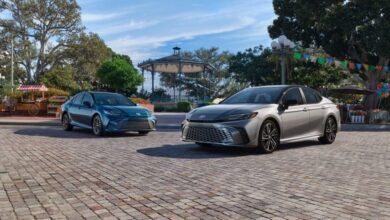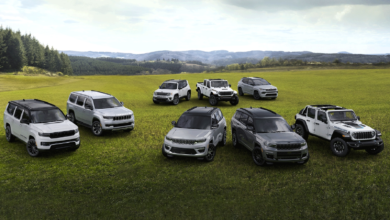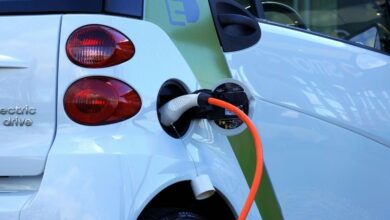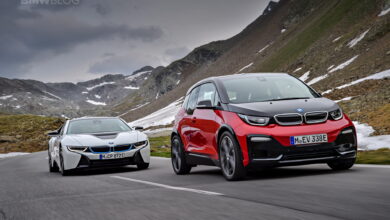5 Fallout Vibe Vintage Vehicles
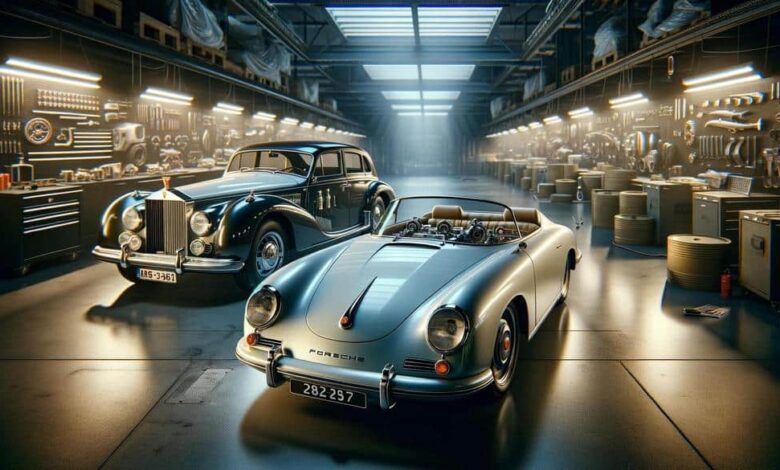
In a world where innovation in the automotive industry is racing towards sustainability, the trend of converting classic cars into electric vehicles (EVs) is making a significant mark. This not only preserves the nostalgic charm of these vintage motors but also aligns with the burgeoning need for eco-friendly transportation solutions. The love affair with classic cars isn’t just about their iconic designs—it’s also imbued with a sense of timelessness and romanticism. But with governments pushing for cleaner transport solutions and a growing consciousness about environmental stewardship, the old gasoline guzzlers are under immense pressure to evolve.
Imagine driving your beloved 1960s Porsche or a vintage Rolls-Royce but without the guilt of spewing pollutants into the air. The once far-fetched idea of marrying the best of both worlds—classic style and modern eco-consciousness—is now a reality. With the advent of electric conversion kits, anyone with a penchant for classic cars can now own a piece of history that’s future-proofed.
This article dives into why this transformation is beneficial, how accessible these conversions have become, and what exciting uses lie ahead for this harmonious blend of the past and the future. The way classic cars are being converted into modern, long-lasting sustainable vehicles mirrors the Fallout series’ Vault-Tec shelters, designed to extend humanity’s survival and adapt to new environmental realities far into the future.
The text below lays the groundwork for a comprehensive exploration of the burgeoning trend of converting classic cars to electric, emphasizing the environmental benefits, enhanced reliability, and the newfound accessibility of conversion kits. The integration of this innovative technology ensures these timeless vehicles remain relevant, sustainable, and cherished by future generations.
Why Convert Classic Cars to Electric?
The Environmental Impact
First and foremost, switching classic cars to electric power significantly reduces their carbon footprint. Traditional gasoline engines produce a plethora of emissions, contributing heavily to air pollution and climate change. Governments worldwide are implementing stricter emissions regulations, pushing the transportation sector towards zero-emission vehicles.
Just as the resilient characters in Fallout maneuver through a post-apocalyptic world with repurposed technology, converting classic cars into electric vehicles ensures these vintage icons don’t just fade away but thrive sustainably in the modern era. By converting a classic car to an electric one, not only are owners preserving a piece of history, but they’re also aligning with these regulatory trends and helping to combat global warming.
Enhancing Performance and Reliability
One of the most compelling reasons to make the switch is the enhancement in performance and reliability. Electric motors are simpler than internal combustion engines and have fewer moving parts, which means they’re less prone to mechanical failures. For instance, Ian Corlett, a classic car enthusiast, transformed his 1966 Porsche 912 into an electric vehicle. He notes that while he misses the engine’s classic roar, the benefits, such as a 100-mile range and reduced maintenance, far outweigh the drawbacks. Electric conversions bolster torque and acceleration, making these vintage beauties faster and smoother to drive.
Preservation of Classic Design
Critics might argue that converting to electric power strips the car of its authenticity. However, many conversion experts, like those at Lunaz, ensure that while the engine and powertrain are modernized, the car’s aesthetic and iconic design remain untouched. These experts integrate modern conveniences like infotainment systems and climate controls in a way that they blend seamlessly with the car’s historic character.
In the same way Fallout’s television adaptation repurposes a storied past into a fresh narrative for today’s audience, transforming classic cars into electric vehicles revitalizes historical elegance with eco-friendly advancements for the future.
Electric Car Conversion Kits are Pretty Accessible
Availability of Conversion Kits
The once daunting task of converting a classic car into an electric vehicle has become much more accessible thanks to the rise of dedicated conversion kits. Companies like Electric GT, eClassics, and Yamaha are at the forefront, offering kits specifically designed to simplify the process for both professional garages and amateur car enthusiasts. For example, Electric GT has introduced an electric “crate motor” which can turn almost any classic car into an eco-friendly EV. Similarly, Yamaha has developed compact and powerful electric engines tailored for a range of vehicles, from motorcycles to full-sized cars.
DIY Conversion Process
Thanks to detailed, user-friendly conversion kits, transforming your classic car at home is more achievable than ever. The kits typically come with everything you need, including the electric motor, battery pack, and comprehensive instructions. For a standard conversion, all that’s required are basic tools and a modicum of mechanical know-how. Electric GT claims that a DIY enthusiast could complete an engine swap within approximately 40-50 hours using their kit. This process, which involves removing the old gasoline engine and installing the new electric motor and associated components, is designed with simplicity and safety in mind, making it feasible for a weekend hobbyist.
Time and Cost Considerations
While the idea of converting a classic car to an electric vehicle may seem costly, it’s important to consider the long-term benefits and savings. Basic conversion kits start at around $32,500, with high-end kits going up to $80,000. Although these costs might seem steep, they are an investment in reliability, performance, and environmental stewardship. Additionally, many conversion services offer flexible options, from a simple motor swap to a complete overhaul that includes modern amenities like advanced infotainment systems and climate control.
Electric Classic Car Conversions
The Little Car Company’s Bentley Blower Junior
The Bentley Blower Junior represents a pioneering venture into the realm of electric classic cars, perfectly balancing heritage and modern technology. Echoing the grandeur of the 1929 original, the Blower Junior is an 85% scale, electrically-powered replica that maintains all the charismatic details of its predecessor. Under the hood, this mini-marvel houses a 10.8-kWh 48-volt battery pack discreetly nestled within a cast-metal faux supercharger, offering an impressive total of 20 horsepower.
This electric powerhouse ensures that the nostalgic experience remains intact, while the added benefit of eco-friendliness makes it a dream for modern enthusiasts. The car’s stellar design even captivates onlookers, from London taxi drivers to Buckingham Palace party guests, showcasing the timeless allure of the Bentley legacy.
Produced by The Little Car Company, the Blower Junior blurs the line between nostalgic classic and contemporary vehicles, making it street-legal in both Europe and North America. This meticulously crafted vehicle features authentic design elements like hand-formed metalwork, leather straps, and semi-elliptical springs, but with modern safety upgrades, including hydraulic disc brakes and three-point seatbelts.
With three power modes—Comfort, Bentley, and Sport—the Blower Junior caters to drivers of all ages, enhancing its appeal as a versatile and delightful driving experience. The ability to bring a piece of automotive history into the eco-friendly future is a testament to the ingenuity and craftsmanship behind this exceptional vehicle.
Electric GT’s Fiat 124 Spider
Electric GT is setting new standards for classic car conversions with their groundbreaking electric “crate motor” kits. One remarkable example is their transformation of the vintage Fiat 124 Spider. This classic Italian beauty, known for its elegance and sporty feel, received a revolutionary upgrade with Electric GT’s powerful yet compact electric drivetrain. The result? An e-Spider that boasts 120 horsepower and accelerates from 0 to 60 mph in just 7 seconds—3 seconds faster than its original gasoline version. Despite its small 25 kWh battery pack, it manages a respectable range of 75 to 85 miles, perfect for weekend getaways and urban exploration.
The conversion kit, designed with both simplicity and safety in mind, includes a self-contained motor and control unit that fits seamlessly into the engine bay. It retains the car’s classic manual transmission, which means driving enthusiasts can still enjoy the tactile pleasure of gear shifts. This project exemplifies how a perfect blend of old-world charm and cutting-edge technology can create a vehicle that’s both stylish and environmentally friendly.
Volkswagen Beetle by eClassics
The iconic Volkswagen Beetle, a symbol of the 1960s counterculture, has found a new lease on life thanks to eClassics. This German company, in collaboration with Volkswagen, offers an official electric conversion kit that is transforming these beloved “Bugs” into modern, eco-friendly marvels. The conversion process involves replacing the original air-cooled engine with an electric drivetrain sourced from the VW e-Up! city car. This upgrade includes a single-speed gearbox and a battery that offers a driving range of approximately 124 miles on a full charge.
Despite adding nearly 500 kg to the Beetle’s weight, the electric motor enhances its performance, allowing it to accelerate from 0 to 50 mph in just 8 seconds and reach a top speed of 93 mph. This project not only preserves the Beetle’s iconic design but also provides the practicality and efficiency that modern drivers require.
Rolls-Royce Phantom V by Lunaz
For the luxury car aficionado, Lunaz offers a truly breathtaking conversion: the 1961 Rolls-Royce Phantom V. Known for its unparalleled elegance and opulence, the Phantom V is now being reborn as an electric vehicle with a price tag to match—starting at $655,000. This conversion involves a complete overhaul, including the installation of a massive 120 kWh battery pack that boasts a range of over 300 miles.
Lunaz ensures that the Phantom V retains its luxurious features while integrating modern technology such as Wi-Fi, satellite navigation, and a state-of-the-art climate control system. This project showcases how even the most prestigious and historically significant vehicles can be updated to meet current environmental standards without compromising on luxury or style.
Future of Historic Car Electric Conversions
Broader Applications of Electric Motors
The transition of classic cars to electric power is not just a niche market; it has broader implications that could transform various sectors. Beyond personal vehicles, electric motors are being poised for use in public transportation, including buses and shuttles, which could significantly reduce urban pollution. Moreover, the marine and aviation industries are also exploring electric propulsion to create cleaner, quieter, and more efficient modes of transport.
Integrating Smart Technology
The integration of smart technology into electric classic cars is a game-changer. Features such as advanced driver-assistance systems (ADAS), Internet of Things (IoT) connectivity, and AI-driven diagnostics can make driving these vehicles safer and more enjoyable. For instance, Electric GT and other companies ensure that modern electric drivetrains are equipped with sophisticated control systems that provide real-time data on performance and battery health.
Economic and Social Impacts
Electrifying classic cars can have significant economic and social benefits. The growing demand for electric conversions is creating new jobs in engineering, manufacturing, and specialized automotive services. By repurposing vintage vehicles, we are also preserving automotive heritage and reducing waste. Socially, this trend promotes a balance between nostalgia and modernity, allowing car enthusiasts to enjoy their passion in an environmentally responsible way.
Furthermore, as more people adopt electric conversions, the costs are likely to come down, making these technologies more accessible to a broader audience. The classic car community, once viewed as resistant to change, is now embracing this innovative trend, which bodes well for the future of sustainable transportation.
Driving the Future: Electrify Classic Cars for Power
The movement to convert classic cars to electric power represents a significant and exciting shift in the automotive world. Just as the new Fallout series preserves the rich lore and unique aesthetics of the video games while adapting to modern storytelling, converting classic cars to electric vehicles marries the timeless charm of vintage designs with the innovations of sustainable technology. By combining the timeless appeal of vintage vehicles with the eco-friendly advantages of modern electric powertrains, we are not only preserving history but also paving the way for a cleaner, more sustainable future.
This transformation offers numerous benefits:
- Reduced emissions.
- Enhanced performance and reliability.
- The ability to maintain the classic look and feel of beloved vintage cars.
Thanks to the accessibility of detailed conversion kits from companies like Electric GT, eClassics, and Lunaz, this innovative process is now within reach for both professional garages and home mechanics alike.
As we look to the future, integrating advanced technologies and the expanding applications of electric motors promise to revolutionize various sectors, from public transport to marine and aviation. The economic and social impacts of this trend will help to create a sustainable, job-rich future that honors the past while embracing the green technologies of tomorrow.
Ultimately, converting classic cars to electric is more than just a trend—it is a statement about our values and our vision for the future. By making this environmentally conscious choice, we celebrate the beauty of the past and ensure that it continues to inspire future generations. Consider joining this innovative movement and experience the joy of driving a timeless classic with a modern, green twist.
